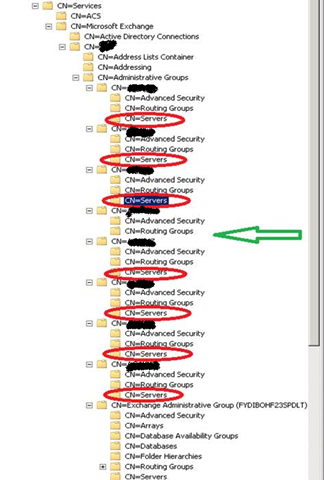I was working on an Exchange 2007 to Exchange 2010 project when we ran into trouble creating our first public folder database on an Exchange 2010 server. Mind you, this was just creating the database. We did not even set up replication for this database yet. All mailboxes still resided in Exchange 2007 databases pointing to an Exchange 2007 public folder. Very soon after creating the database we got notified users could no longer send mails to mail enabled public folders. The exact error was this:
554 5.6.0 STOREDRV.Deliver.Exception:ObjectNotFoundException; Failed to process message due to a permanent exception with message The Active Directory user wasn’t found.
Also browsing of the public folders in Outlook was slow and the application froze/hung. These issues where fixed very fast by getting rid of the still unused public folder database all together. Now we could commence our search for the root cause. The error seemed related to the issue described in Public Folder Replication Fails Due To Empty Legacy Administrative Group which can be found @ http://msexchangeteam.com/archive/2010/05/05/454821.aspx The blog describes this error during replication:
Log Name: Application
Source: MSExchange Store Driver
Event ID: 1020
Level: Error
Description:
The store driver couldn’t deliver the public folder replication message “Hierarchy ([email protected])” because the following error occurred: The Active Directory user wasn’t found.
But apart from replication not working there were other, more severe issues impacting end users who can still all be on Exchange 2007. The hanging of the outlook clients and mail enabled folders no longer being available. Dave Stork blogged about this in http://blogs.dirteam.com/blogs/davestork/archive/2010/03/16/mail-enabled-public-folder-recipient-not-found.aspx
Now the first mentions of the replication issue have been reported back in November 2009 (see http://get-exchange.blogspot.com/2009/11/public-folder-mayhem-exchange-2010.html) but still hasn’t been fixed. For the moment that fix is planned to be included in E2K10 RU5. Currently we’re at RU3, so that might well be august 2010.
The workaround described in above mentioned blog posts works & is effective immediately. Now they described the issue and the fix very well but I’ll add to tips.
Tip 1
“Practical End User Friendly Detection” of this issue can be done using exfolders.exe. You can read more about this tool here: “Exchange, meet ExFolders” (http://msexchangeteam.com/archive/2009/12/04/453399.aspx).The error only occurs when you create a public folder on Exchange 2010 and can be very annoying for the users so I’ll share this tip with you. Download the tool here http://msexchangeteam.com/files/12/attachments/entry453398.aspx and install it on an Exchange 2010 server in the bin directory (follow the readme.txt and don’t forget to merge the .reg file or the tool will crash). Running exfolders.exe and connect against any Exchange 2007 public folder. When you get this error …
—————————
ExFolders
—————————
An error occurred while trying to establish a connection to the Exchange server. Exception: The Active Directory user wasn’t found.
—————————
OK
—————————
… you know you are affected. Deleting the empty Servers containers from ALL legacy Administrative Groups fixes the error. You then can connect successfully to a Exchange 2007 public folder with exfolder.exe. Which is a cool way to test for this issue and if the fix works as you don’t need to create a public folder and possibly hinder you users.
Tip 2
Also note that you need to delete (using ADSIEDIT) every empty servers container out of every legacy Administrative Group, not just or only the one in the “First Administrative Group”. Don’t worry if you renamed that one to something more descriptive, that doesn’t matter at all. All the servers containers in the legacy Administrative Group should be empty I you have no more E2K3 servers left in your exchange organization. Feel free to leave comments on your experiences.

